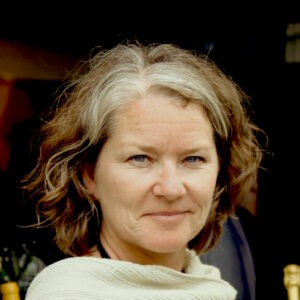For years, researchers and climate scientists have urged people, especially in rich countries, to cut back on meat and dairy consumption to limit greenhouse gas emissions from livestock production.
But new research suggests something else these rich countries, including the U.S., should consider: Letting pastures where cattle graze regrow into forests.
Livestock production, particularly of ruminants, is a major source of climate pollution. That’s largely from cattle belches, which produce methane, and from cutting down forests for pastureland, which releases carbon dioxide. Some research has shown that emissions from food production, much of it from livestock, will propel global warming past 1.5 degrees Celsius, even if the world stopped burning fossil fuels today.
The new research suggests, though, that strategically regrowing forests on land where cattle currently graze, especially in certain parts of the world, while intensifying production in other areas, could significantly lower overall emissions.
The study, led by Matthew Hayek, an assistant professor in New York University’s Department of Environmental Studies, found that reducing livestock production by as little as 13 percent in some areas could remove 125 billion tons of carbon dioxide from the atmosphere, an amount equivalent to global fossil fuel emissions over the last three years.
“Beef everywhere is not created equal,” Hayek said.
Using remote sensing, Hayek and his research team were able to determine how much edible grass is grown on pastureland globally. They learned that some areas, particularly in northern countries, are not as productive, in part because of shorter growing seasons. Returning those areas—which include current grazing land in much of the eastern U.S. and western Europe—to native forests would boost carbon storage because trees are especially good at pulling carbon out of the atmosphere and keeping it there.
Coincidentally, the areas with higher potential for carbon sequestration are in parts of the world with the highest rates of meat and dairy consumption—the same places where consumers eat more meat and dairy and where those eating patterns are connected to higher emissions.
At the same time, the researchers found that some areas, including many in lower-income countries in sub-Saharan Africa and South America with higher rates of food insecurity, can grow pasture year-round, producing more edible grasses. If these areas could improve production efficiency through better veterinary care or breeding, more food could be produced there, effectively offsetting the lower production from rich countries that return grazing land to forest.
Pasture for livestock is the biggest use of the world’s land, the study notes. Roughly 55 percent of that is in dry grasslands—the other 45 percent is from land that “would be a forest if cattle weren’t there,” Hayek said. “That is a huge opportunity cost.”
In other words, if that carbon-rich land could be reforested while other areas are better used for cattle, the tradeoff would pay huge dividends for the climate without a major loss in protein production. The researchers found that removing livestock from all of this once-forested land could sequester 445 gigatons of carbon dioxide by the end of this century, an amount equivalent to more than a decade of fossil fuel emissions at the current global rate.
This tradeoff, the study notes, has never been analyzed in this way. “What our research helps show is where production can be improved and where it can also be removed,” Hayek said.
The findings are similar to previous research that shows that modest shifts in the consumption and production of rich, northern countries could cancel out an increase in greenhouse gas emission from producing more food to meet nutrition needs in lower-income, food-insecure countries.
Hayek noted that demand for livestock protein is projected to increase significantly within decades and that calls to reduce meat and dairy consumption are still critically important. The study points to the need for better land management and improved production. A survey published earlier this year of more than 200 climate and agricultural scientists, including Hayek, said emissions from meat production need to start declining by 2030 in order to meet global climate targets.
“All the best science suggests that we need to be reducing beef consumption either way, in high and middle income countries,” Hayek said. “This is not really a substitution for beef reduction.”
About This Story
Perhaps you noticed: This story, like all the news we publish, is free to read. That’s because Inside Climate News is a 501c3 nonprofit organization. We do not charge a subscription fee, lock our news behind a paywall, or clutter our website with ads. We make our news on climate and the environment freely available to you and anyone who wants it.
That’s not all. We also share our news for free with scores of other media organizations around the country. Many of them can’t afford to do environmental journalism of their own. We’ve built bureaus from coast to coast to report local stories, collaborate with local newsrooms and co-publish articles so that this vital work is shared as widely as possible.
Two of us launched ICN in 2007. Six years later we earned a Pulitzer Prize for National Reporting, and now we run the oldest and largest dedicated climate newsroom in the nation. We tell the story in all its complexity. We hold polluters accountable. We expose environmental injustice. We debunk misinformation. We scrutinize solutions and inspire action.
Donations from readers like you fund every aspect of what we do. If you don’t already, will you support our ongoing work, our reporting on the biggest crisis facing our planet, and help us reach even more readers in more places?
Please take a moment to make a tax-deductible donation. Every one of them makes a difference.
Thank you,


